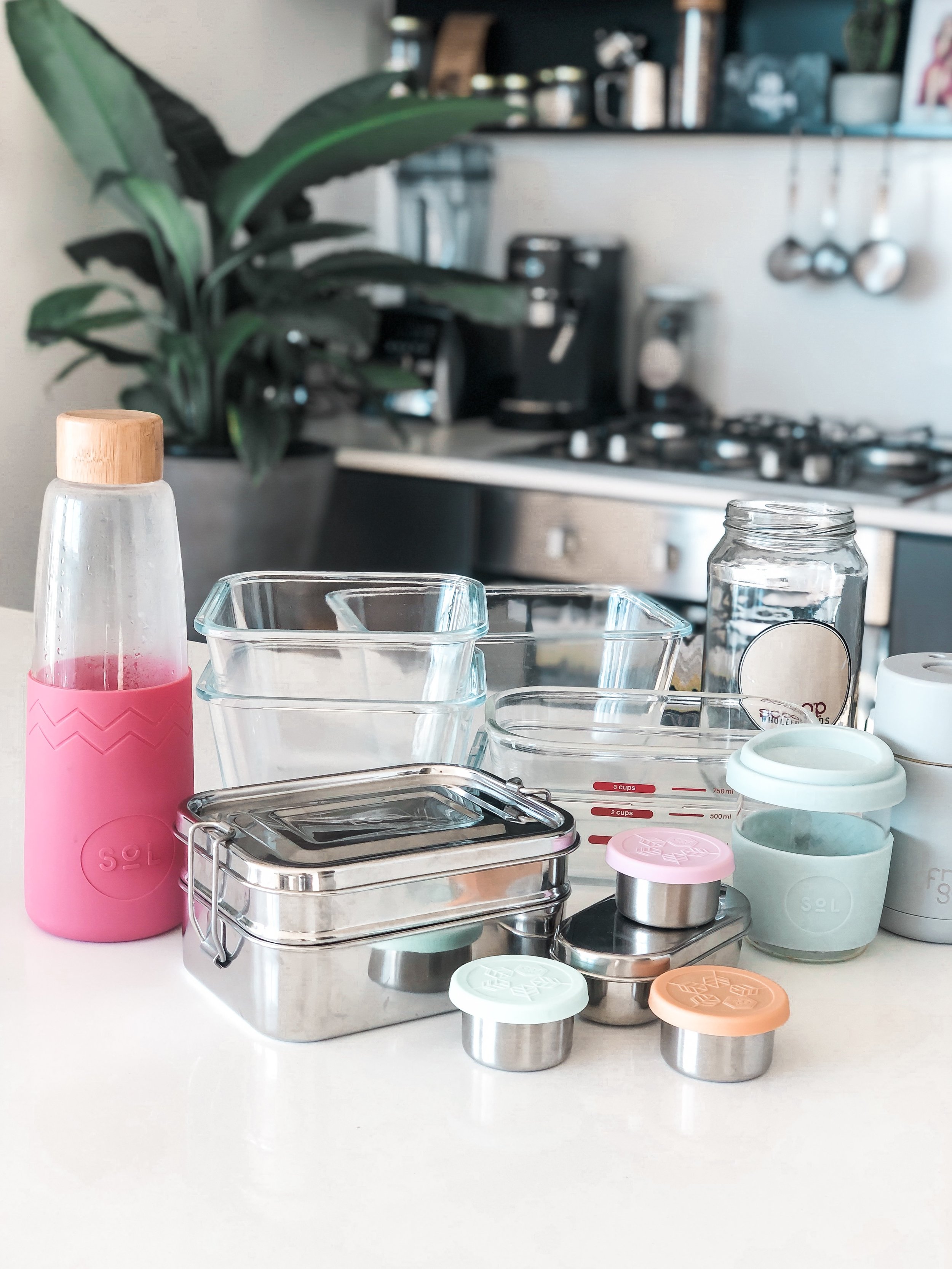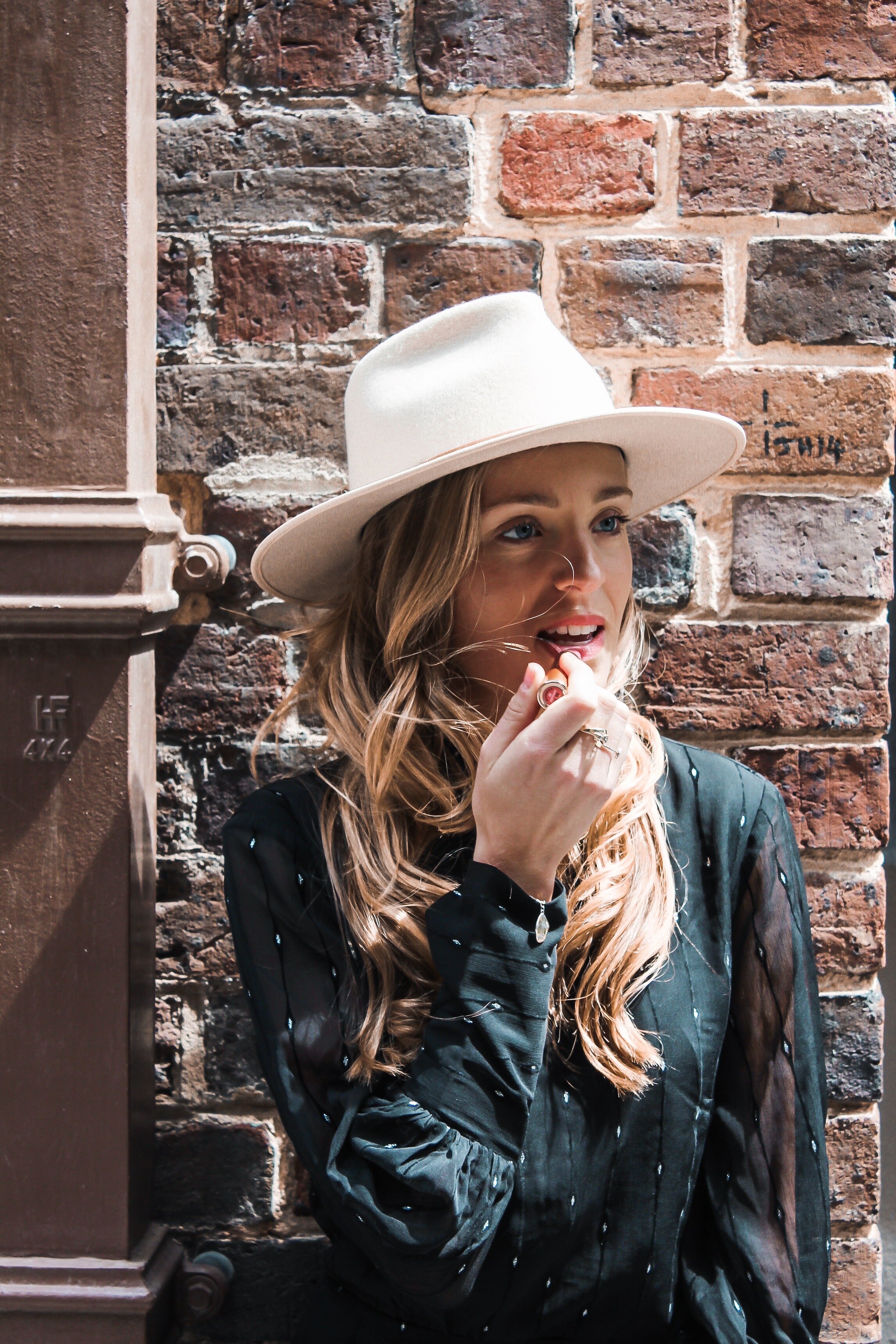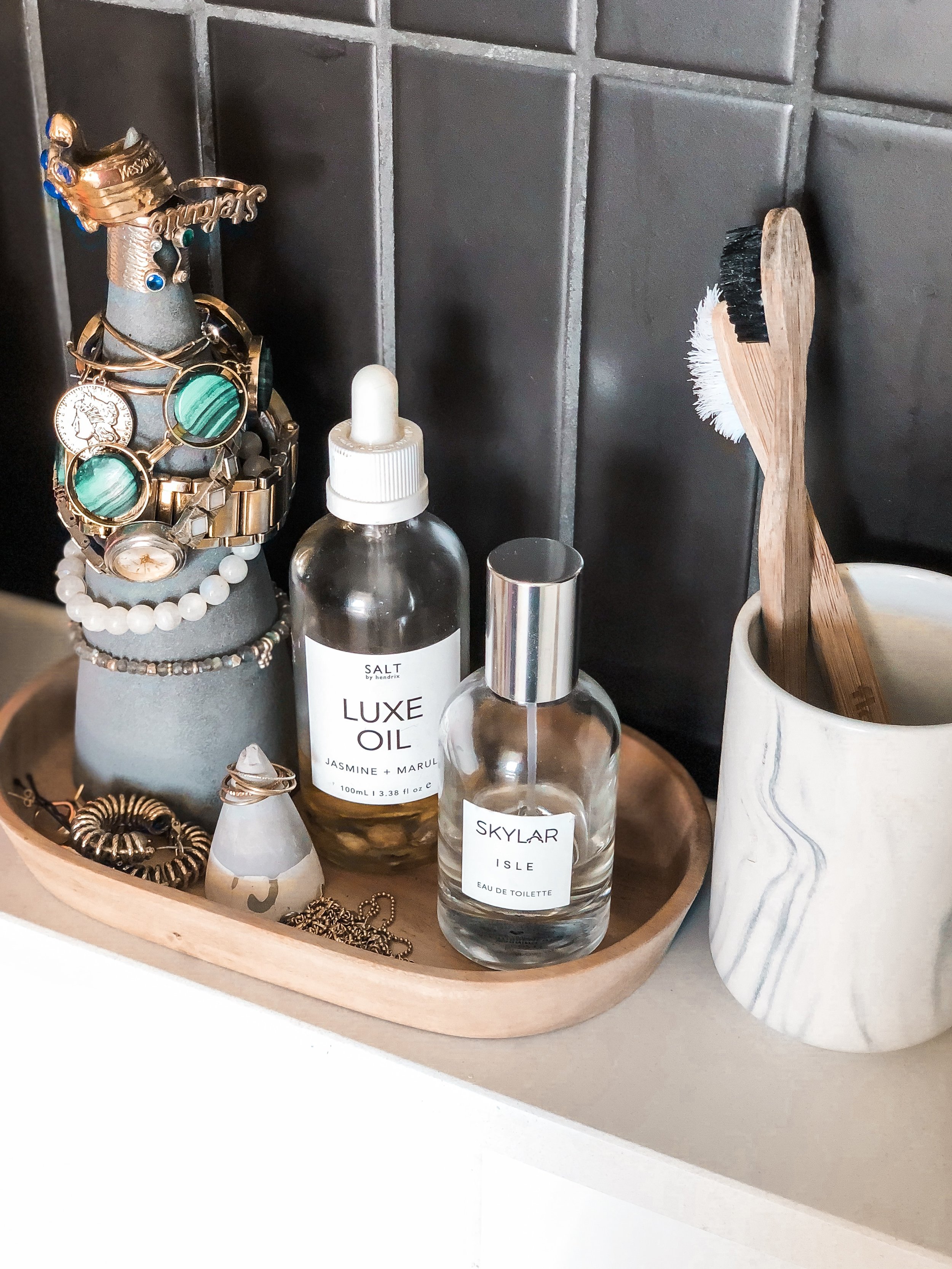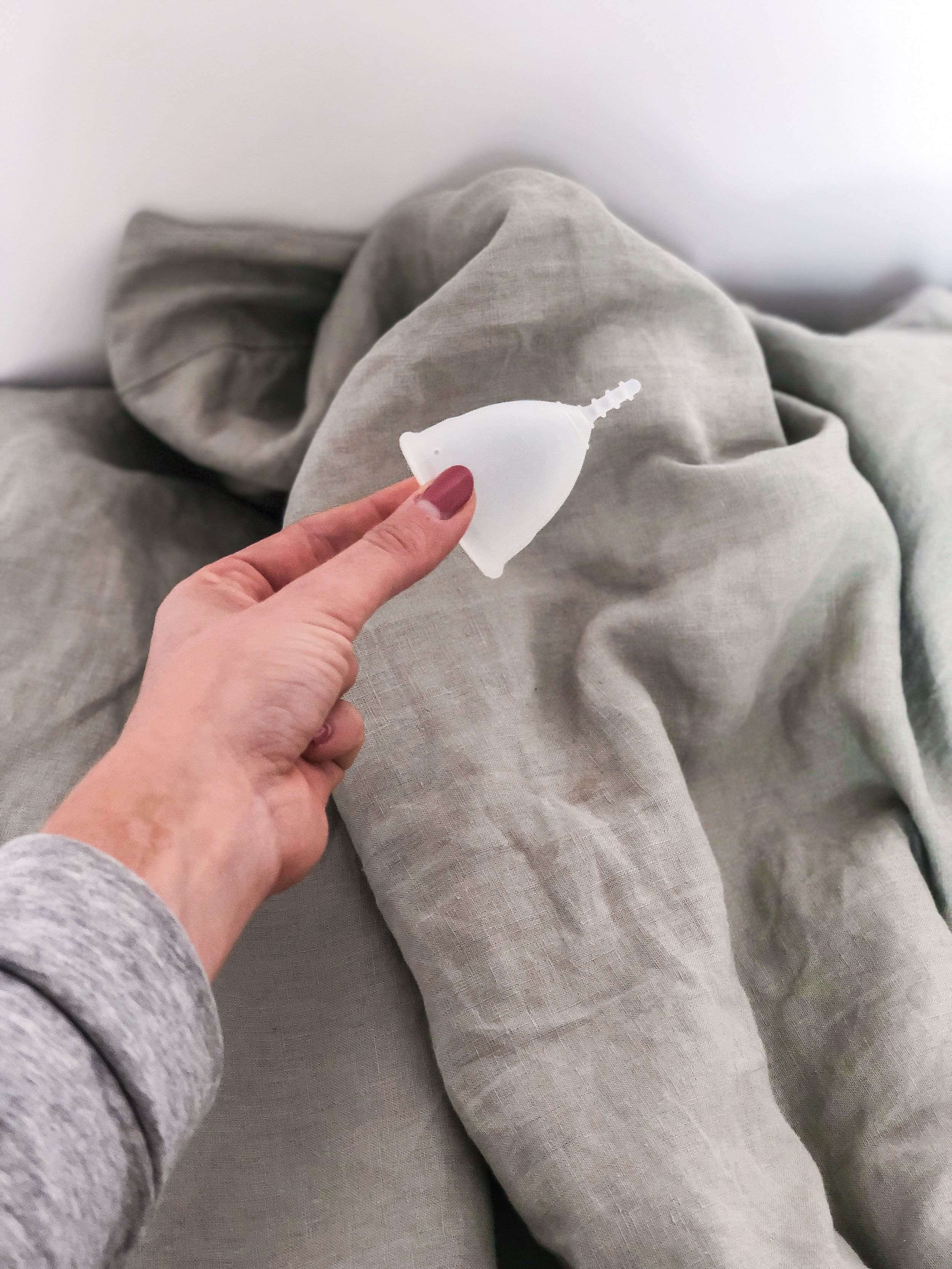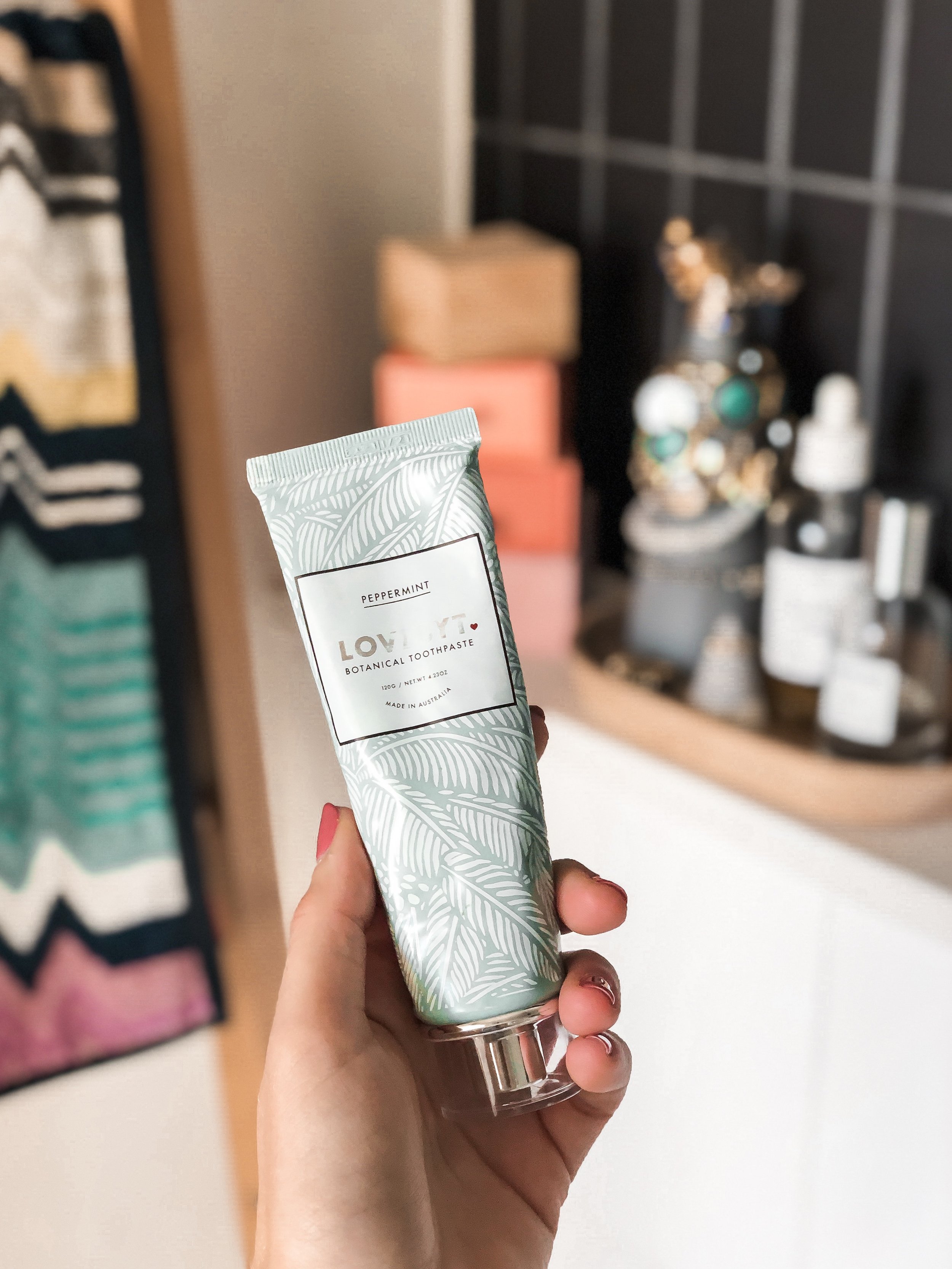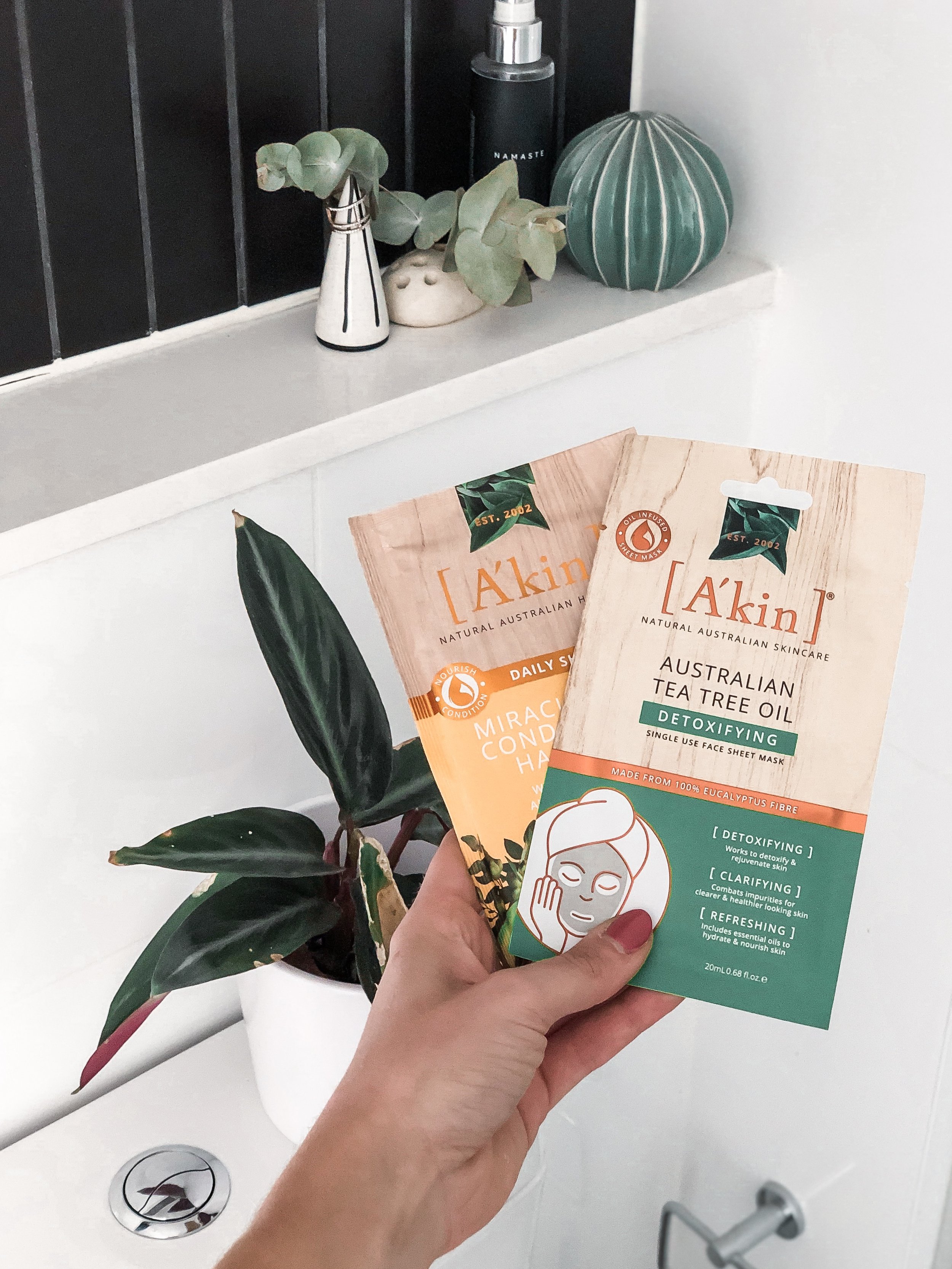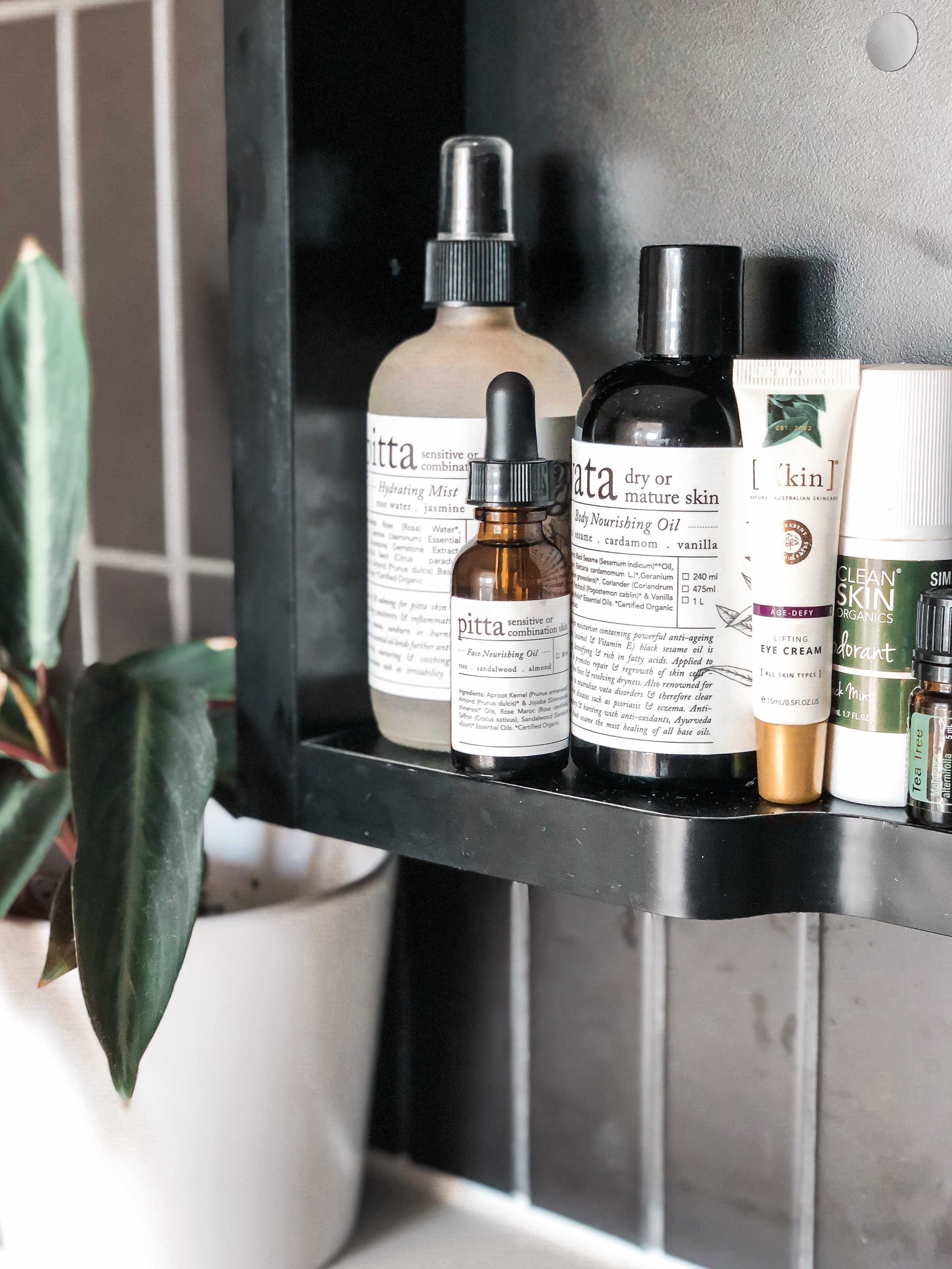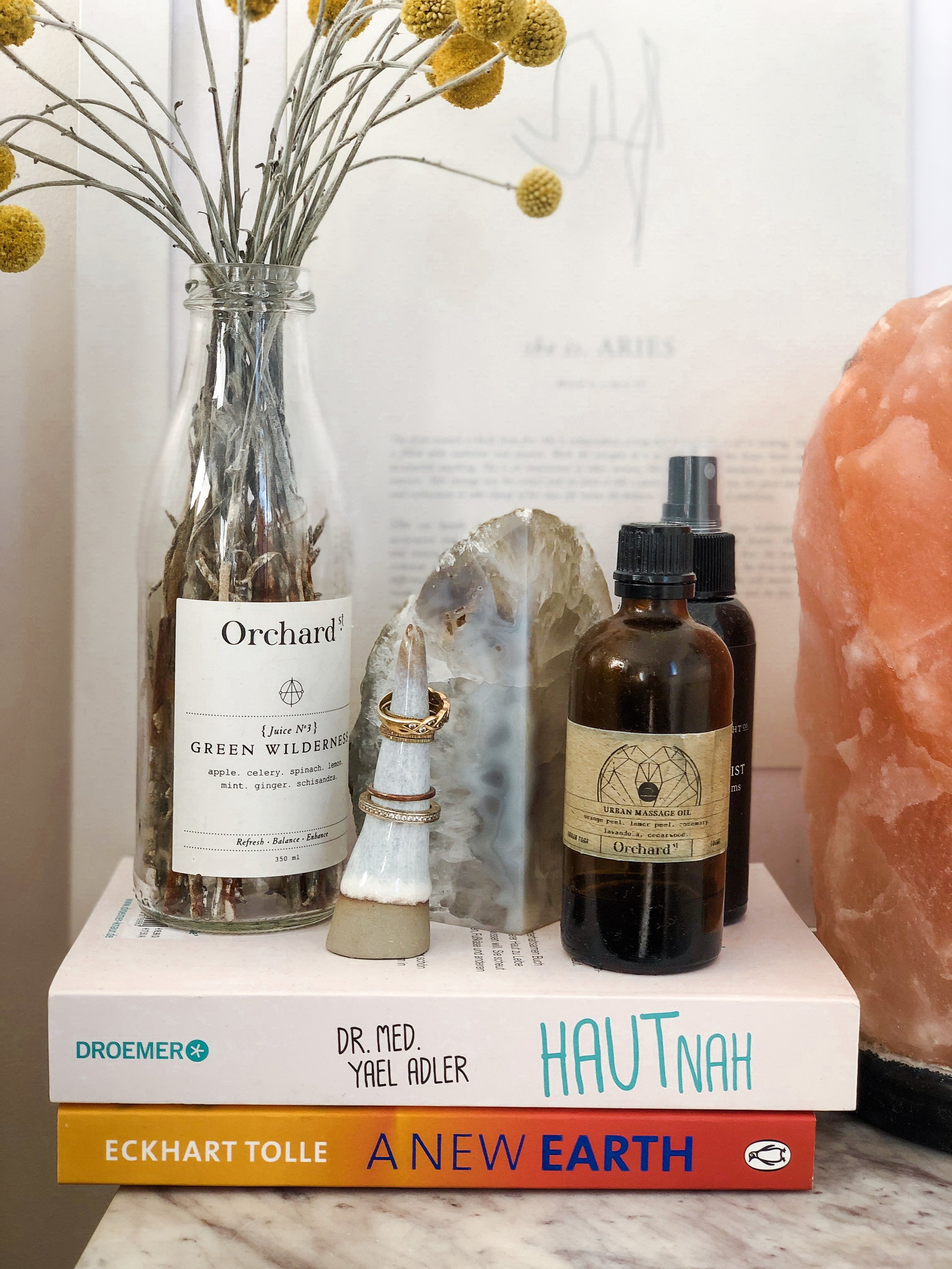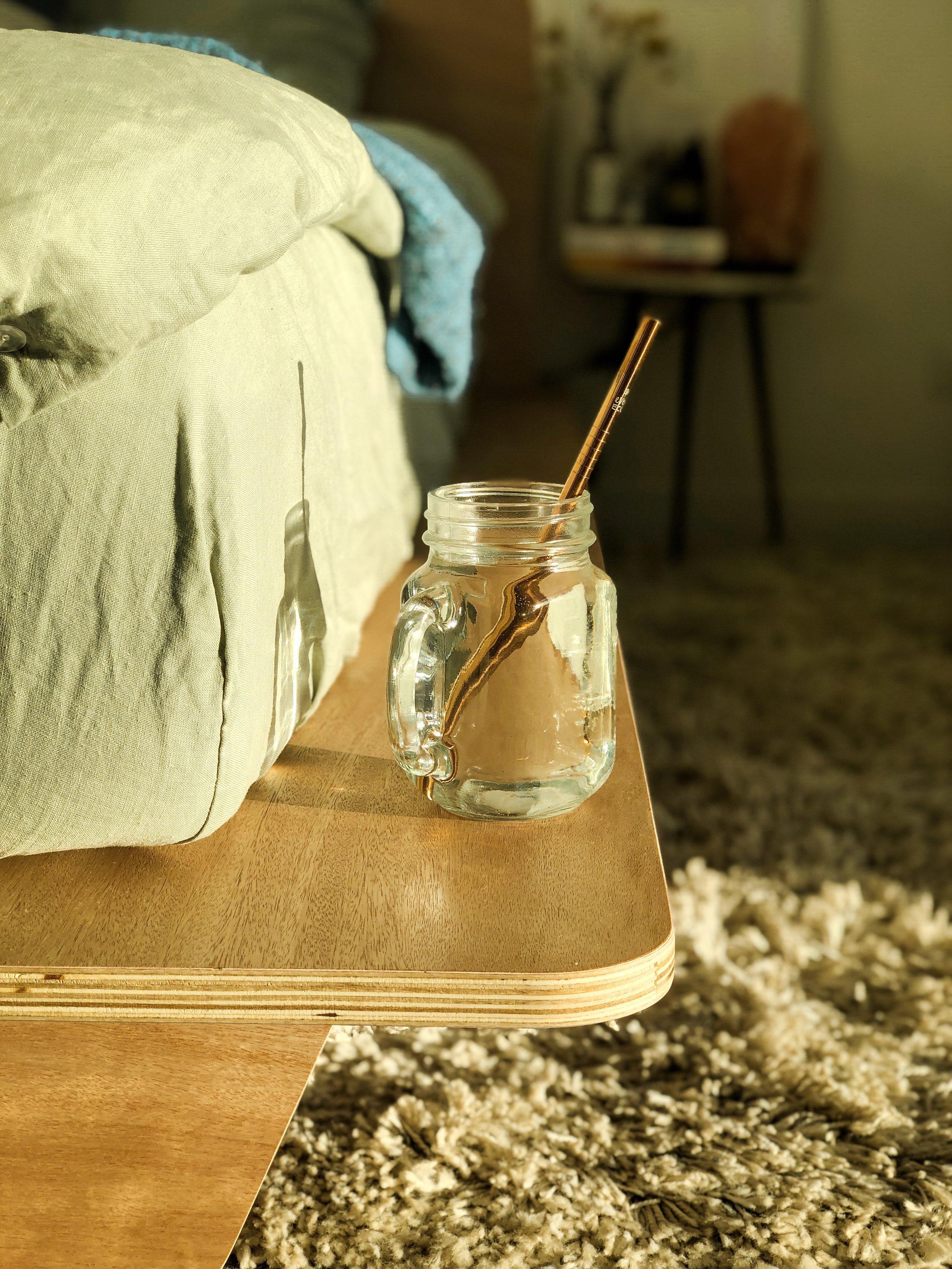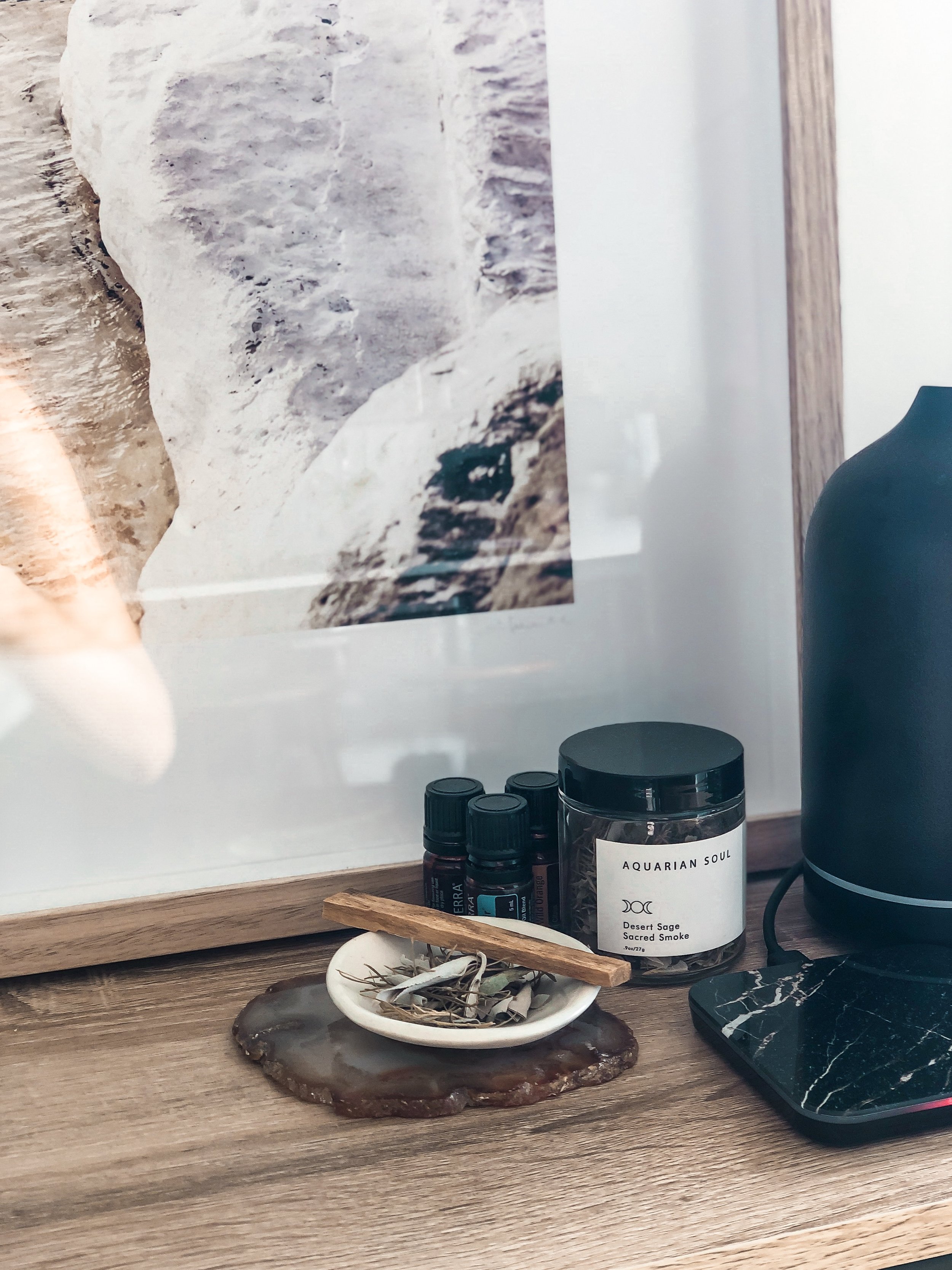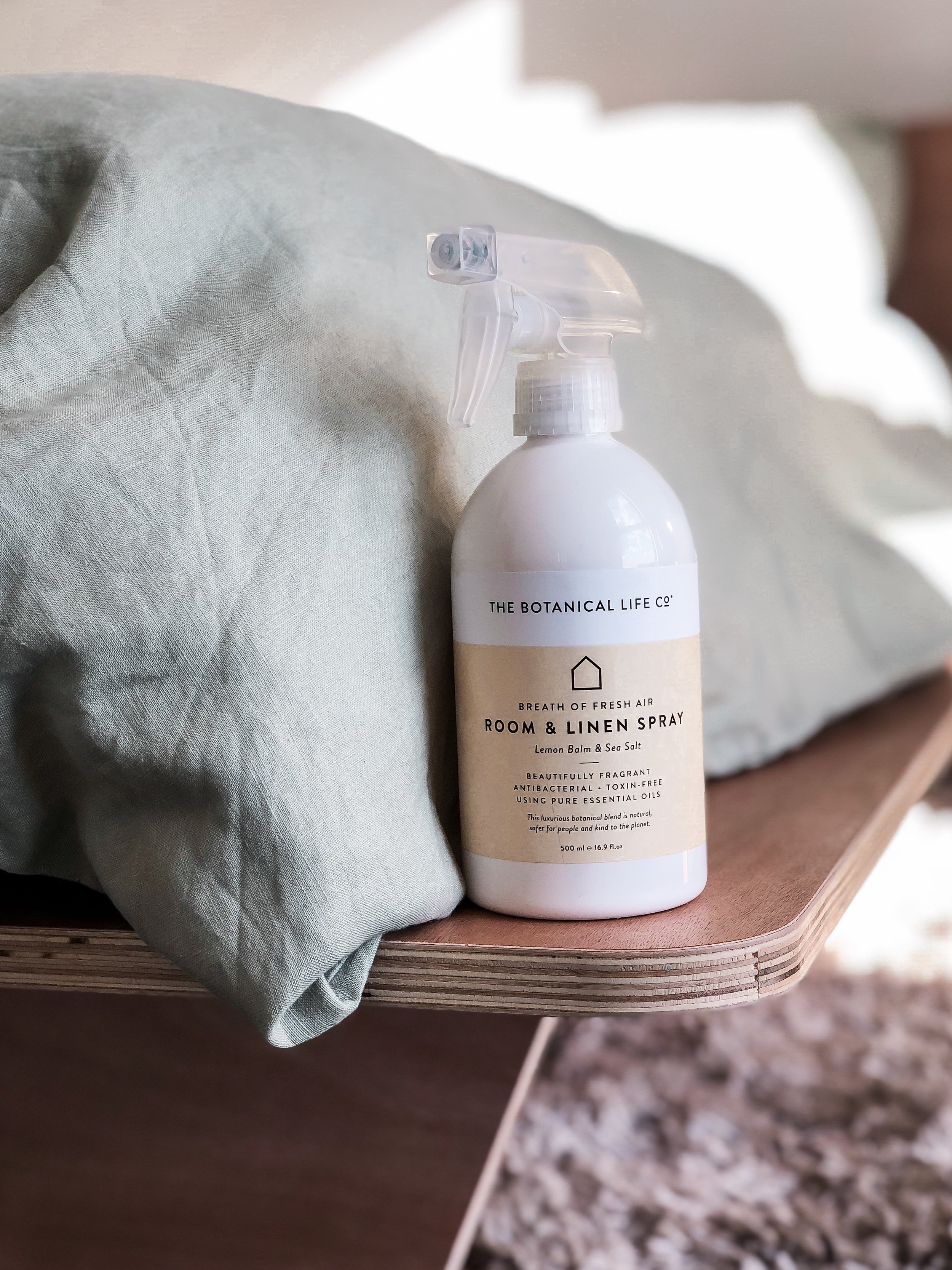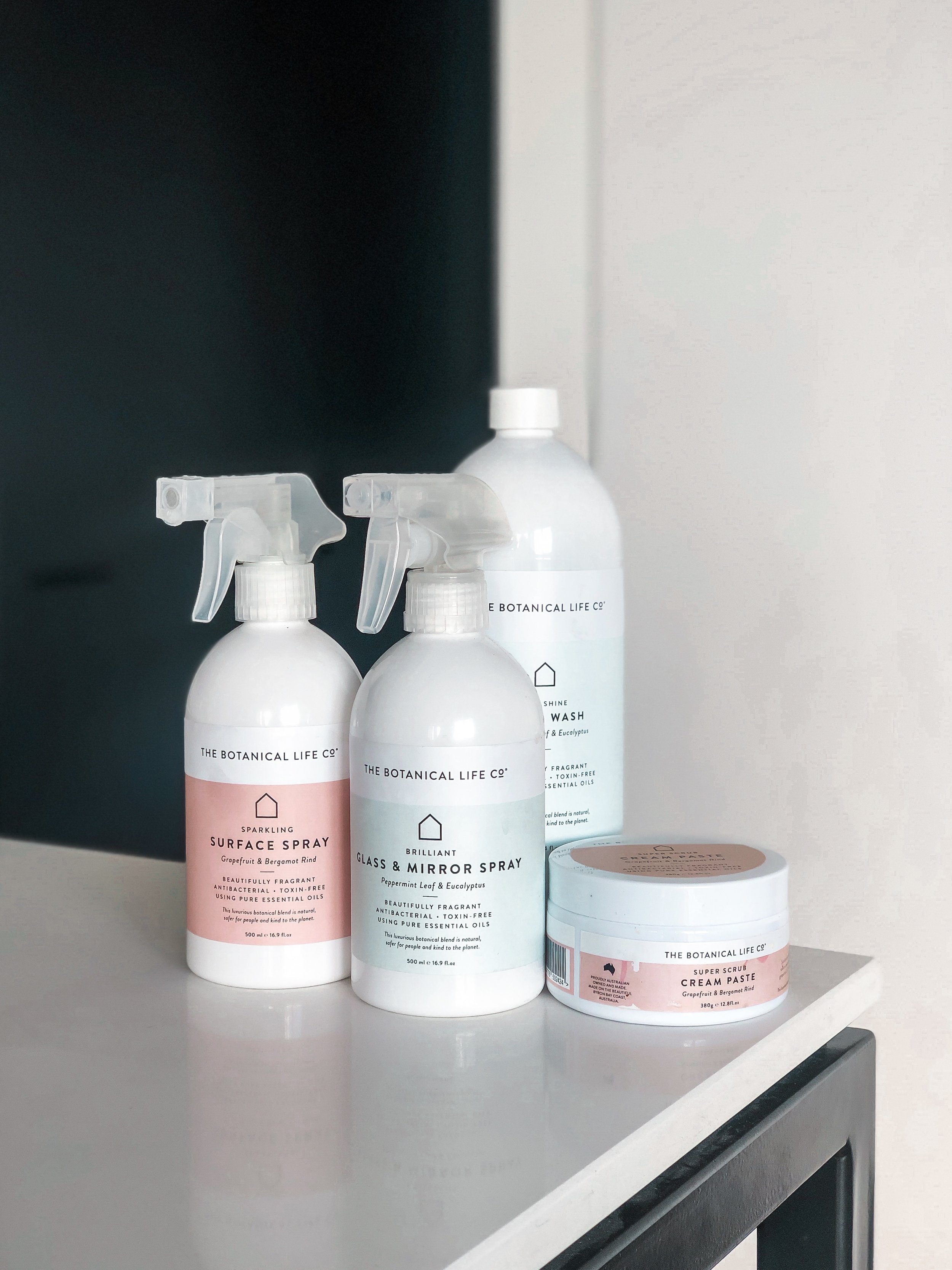My Sustainable and Toxin-Free Apartment Tour
My Sustainable and Toxin-Free Apartment Tour
A little voice inside of me is screaming “Hypocrite!” as I hit publish on this blog post. The reason for this is that I feel like there are still so many areas in my life where I need/would/could/should be stepping up my game and be a more eco-conscious consumer. Once you start looking into things and question the sustainability of the products you use and the way you live, it’s like you’re opening pandora’s box. The list of changes to make is endless! One example is plastic: once you start assessing where you can cut down on single-use plastic, you realise just how much plastic you are actually surrounded by. Once you see it, you can’t unsee it and it at times feels like there’s no escaping it.
Then there’s the dilemma of what battle to choose - environmental sustainability, human sustainability, social sustainability and economic sustainability. You may find a beautiful skincare range that uses non-toxic ingredients and donates to environmental causes, but they still use environmentally unfriendly packaging. Or you may purchase a reusable coffee cup to reduce your plastic consumption, but then find out the cups are produced inhumanely in China. There’s so many things to consider and it can be really hard to find brands that tick all the boxes.
I’m here to tell you that you don’t have to have it all figured out. No one is perfectly eco-conscious. When I was hesitant to share this post with you and voiced that concern on my stories, I had a handful of people reach out encouraging me to share it anyways. And you guys are right: the world doesn’t need a couple of people living 100% sustainably, what the world needs is ALL of us collectively to make continuous small changes. So this is a post of where I’m at, in my own journey of reducing my negative impact on the environment. It’s been a gradual elimination process. I didn’t wake up one morning, throw out all plastic and decide to never purchase conventional beauty or cleaning products ever again. It’s been a really slow process, one where I’ve learnt along the way and have increasingly re-prioritized where and how I spend my money.
Regardless of where you’re at in your own journey, I believe we all have the power to make small individual changes. Your decisions matter and have a real-life impact. From food waste to our storage and cleaning products, we have an opportunity to make more thoughtful decisions to benefit our environment, our health and ultimately our wallets too. All you have to do is start!
In this post, I’m sharing a bunch of ways in which you too can make easy swaps to waste-free, toxin-free and more sustainable and healthy alternatives with a couple of brand suggestions. None of the brands I’m mentioning are sponsored and most of the stuff I have bought with my own money, I’m simply sharing some of the brands I personally use and love!
It's easy to go down the rabbit hole with wanting to do all the changes in one go. I say, pick the options that seem to hit the sweet spot of being affordable, easy, local, and sustainable for you, and start there. And if you have any ideas and suggestions on what else I/we can do together, I’d welcome your positive criticism as I’m always looking to learn more.
KITCHEN
For me, the kitchen is where I spend the most time and it happens to also be the perfect place to start practicing sustainability. Here’s a couple of really easy swaps you can make with little investment:
Glass jars: Have you ever left spaghetti sauce or green pesto in a plastic tupperware? You know how after a while the plastic is tinged with the sauce? The same way the colour of your food leaches into the plastic, the plastic (especially when heated) will leach into your food. Opt for glass or stainless options to store your food instead. I especially love these stackable bento boxes from EverEco for when on-the-go.
Grocery bags: Plastic bags are incredibly dangerous for marine wildlife as they are easily ingested by animals. More than a third of the world's sea turtles have been found with plastic waste in their stomachs. That’s just fu*%cked (for some more mind-blowing plastic stats, read here). The easy solution: bring your own reusable tote bag to the grocery store. The hardest thing is to remember to bring one, so my tip is to always leave some in the back of your car or in your bag so that you’re not forced to use plastic bags during an impromptu grocery trip. Also bring smaller produce bags like the cotton bags from Tuckr so you can store loose fruits and veggies.
Cling foil: For years I’ve been using cling wrap, a single-use plastic film that isn't recyclable or biodegradable. But I just recently made the swap to the reusable clear food wraps from Seed & Sprout, and I’m never looking back. They’re made out of food grade silicone, a more stable, flexible, sustainable, and safe alternative to plastic, safe for people and the planet. I’m also using these super-cute beeswax wraps from Tuckr to wrap half cut vegetables, fruits, herbs, bread etc.
Baking paper: Most conventional baking papers are coated with Quilon, which contains Chromium, a heavy metal that can leave toxic trace elements. Opt for a silicone baking paper or an unbleached and chlorine free alternative like the brown baking papers from Multix instead. Also remember that you can use baking paper more than once (depending on what you’re baking, of course), so don’t throw it out after just one use.
Buying in bulk: In Australia, we’re really lucky to have lots of bulk food stores where we can buy nuts, seeds, grains, oils, granola etc. in bulk. When we moved here, I purchased a bunch of big glass jars and I try to go to bulk food stores for anything that would otherwise come in plastic packaging. I’m not going to lie, this definitely is a costly alternative.
Bin bags: The easy way out is to opt for certified compostable and biodegradable bin bags, which is what we’ve been doing using the corn starch-based certified compostable bin bags from Multix. However, it would be even better to ‘go naked’ and not use a bin bag at all or use old newspaper, coupled with reducing your waste through recycling and composting as much as you can. Biome has written a really insightful blog post into this, and outlined the differences. One thing to be mindful of is to avoid degradable bags, as they actually are equally harmful as normal plastic bags. If you do choose to continue using bin bags, make sure they are certified biodegradable and compostable.
Recycling and composting: Having grown up in Germany in Switzerland , I have been recycling and composing all my life. According to environmental consultants Eunomia, Germany recycles 56 per cent of its municipal waste, more than any other country in the world. My parents took this task very seriously and got us kids involved in it from a young age. I remember that at least once a month I’d drive up to one of the large recycling stations with my dad and he would show us exactly how to recycle anything from batteries to books to electronics. The recycling system in Australia is nowhere near as good! As I’m writing this, I am committing to purchasing a Bokashi composting bin so that I can at least start composting our food scraps on the balcony. Stay tuned.
ON-THE-RUN STUFF:
Water bottle: If you haven’t yet gotten yourself a reusable water bottle, get on this stat. There are so many beautiful design options and it’s literally the easiest way for you to reduce your plastic consumption, plus it’s so much healthier for you as you’ll be avoiding BPA. The one I currently use is from Sol Cups.
Coffee cup: Ditto above. More and more cafes offer discounts if you rock up with your own cup, now if that isn’t motivation enough. Pro tip: keep one at home and one in the office, so you have zero excuse.
Take out eating set: We’ve all been in that situation where you’re forced to eat take-out and it comes in plastic packaging with plastic cutlery. While you sometimes can’t avoid the packaging, bringing your own set of cutlery means you can at least avoid some bit of plastic.
BATHROOM
Our bathroom cupboards are a minefield of potentially hazardous ingredients that enter our blood stream directly via our skin, nicely packaged in single-use plastic. Eeeek! Personally, this is an area where I have struggled to strike the right balance between the different types of sustainability - oftentimes a brand I like who uses toxin-free alternatives still comes in plastic packaging and I’m forced to compromise in some way. I have experimented with making my own beauty products and will share some of the recipes in future posts, but I’d be lying if I said I don’t use mostly store-bought products. Even so, this is what you can do to make your bathroom more sustainable:
Tooth brush: You're supposed to change your toothbrush every 3 months, meaning you’re looking at potentially well over 2800 plastic toothbrushes in a lifetime, from just one person. Fortunately there are many bamboo alternatives that you can compost.
Tooth paste: I’ve made my own in the past using baking powder, but when I don’t have the time for this, I opt for organic fluoride free toothpaste such as LoveByt. They use botanical ingredients including charcoal, essential oils, camomile and peppermint, and their packaging is recyclable.
Lipstick: Did you know that women ingest up to 2kg of lipstick over a lifetime?! Now think about all the crap that’s in conventional lipsticks like coal tar, carmine, triclosan, parabens, or mineral oils. I’ve personally found lipsticks one of the easiest make-up swaps to make because there’s just so many great alternatives out there. I’m an absolute sucker for Karen Murrell’s range - the Violet Mousse and Cordovan Natural are my top two picks.
Menstrual products: Switching to eco-friendly menstrual products is one of the best swaps I’ve made. I initially swapped to organic cotton tampons from Tom Organics (chemicals down there? NO THANKS), but have since committed to using an organic menstrual cup. Menstrual cups are a bell-shaped, reusable cup made from medical grade silicone that collect menstrual fluid and are reusable as they don’t absorb blood like tampons and pads do. You simply tip blood out after use and sterilise it in between use. It definitely took me a little while to get used to it, but it’s just so much more sustainable for our planet that I persisted until I felt 100% comfortable using a menstrual cup. If that’s not your thang, you can also look into period panties such as Thinkx.
Perfume: Essential oils are your best friend. I make most of my perfumes myself mixing a variety of my favourite essential oils. But I’m still always on the hunt for a natural perfume that actually lasts and have recently discovered Skylar, a vegan, cruelty free perfume brand that is free of parabens and other nasty chemicals AND the scent does lasts decently long. I also love spritzing Trilogy’s Vitamin C Energising Mist on my face throughout the day, as it’s got a refreshing citrus-y smell and hydrates my face at the same time.
Essential oils: You can use essential oils for so much more than perfumes. I use it to gargle, reduce blemishes and treat pimples, help bruises heal faster and as a natural flu remedy, plus so much more. The world of essential oils is fascinating and there’s so many incredible benefits. The DoTerra ones I use come in glass bottles and are very sustainable as they last forever and the company has an incredible sustainability ethos.
Face mask: There’s many beautiful homemade face mask and face scrub recipes out there. But if you do choose to purchase face masks, be mindful of the ingredients and the sustainability of it. Especially sheet masks are often non-degradable. A’kin sheet masks are a slightly more sustainable alternative as they use natural, plant-based vegan sheet masks made out of bio-degradable eucalyptus fibre.
Avoid plastic where possible: Like I mentioned, it can be tricky to find brands that are toxin-free, cruelty free and don’t use plastic. But there are more and more brands that are opting for glass packaging, and if we choose to support them with our money, hopefully more brands will follow suit. If you can make some beauty products yourself, even better!
Don’t let the water run: Your parents probably taught you this one, but don’t let the water run when brushing your teeth and also turn off your shower while you later your hair and body. Water is precious, and we have to do everything we can to preserve it.
BEDROOM
I’ve already written a couple of blog posts on how to make your bedroom a healthy haven and how to improve the quality of your sleep (here and here). Here are some more tips to make your bedroom more sustainable and good for your health:
Say no to synthetic fragrances: We all love a spa-like-smelling bedroom. But instead of buying cheap fragrance candles that are bad for the environment and your health, opt for organic soy candles, natural incense (I’m loving Subtle Bodies at the moment) or essential oil diffusers. I use all three across our apartment.
Be mindful of where your bed sheets come from: High-quality bed sheets can get expensive, but it’s well worth the investment and oftentimes means the product is produced more sustainably. Linen, for example, is made out of flax, which grows naturally and requires no additional water other than rainwater, making it a very eco-friendly fabric. Because it’s a natural fibre, flax linen is also recyclable and biodegradable. We’ve got a beautiful set from Bed Threads and both Phil and I are really happy with it.
Choose furniture that is certified no VOC’s: This is important for all your furniture, but especially for your bed where you spend presumably 8 hours each day. This is really important as the off-gassing of such chemicals, which are commonly found in furniture, mattresses, paint, and any number of household goods, can be quite dangerous for our health in the long run.
LAUNDRY/CLEANING
Laundry and cleaning products if often the last place that people make a switch; it certainly was for me. But if you think about it, what’s the point of using natural incense to make your home smell lovely if you then use toxic cleaning products that you’ll be breathing in all day long? None, really. Here’s the few switches that we have made:
Use essential oils wherever possible: I often make my own cleaning products with the use of apple cider vinegar, baking soda and essential oils. My fave oils to use are lemon, wild orange, lavender, peppermint and eucalyptus. A good all-purpose cleaner recipe is this: 1 cup vinegar, 1 cup distilled water, 30 drops lemon essential oil, 10 drops lavender essential oil. Simply spray on surface and wipe clean with a soft cloth. Voila!
Vitamix Cleaning: You know how your blender container gets cloudy-looking after some time? This will make it look brand new: add 1 cup apple cider vinegar and ¼ cup of baking soda into the Vitamix. Wait until it stops fizzing, blend for a couple of minutes then rinse through standard water and soap.
Non-DIY alternatives: There’s so many incredible options out there that do good for our planet and our health. For all things cleaning I’m loving the natural, vegan, cruelty-free and palm oil free range from The Botanical Life Co and for laundry products I’m using EcoStore.
Find refill stations: More and more health food and bulk buying stores now have refill stations for your favourite cleaning and laundry supplies. Simply bring your plastic container from the first purchase you made and keep using that one for every refill.
Only do what’s necessary: Only run a full load when you use your washing machine and dishwasher. Running these appliances at half capacity will waste water.
Swapping from conventional products to these toxin-free and more sustainable products is a huge step towards a more eco-conscious and sustainable lifestyle, and I applause everyone who is making those changes. If you want to learn more, there’s a couple of resources I recommend:
Read: Every Woman’s Guide To Saving The Planet by Natalie Isaacs
Follow: @litterless, @going.zero.waste, @waterthruskin, @intentionalism and @wastelandrebel for sustainable living inspiration
Do: The Plastic Free July challenge is kicking of July 1st, come join if you’re up for a challenge. I’m using this as a way to really push myself and become even more conscious of my plastic consumption.
Support: Find local communities that are committed to doing good and support them in any way you can. In Bondi for example, there’s Plastic Free Bondi who are comitted to making Bondi single-use plastic free. Join them for one of their beach clean up’s if you’re in the area.



